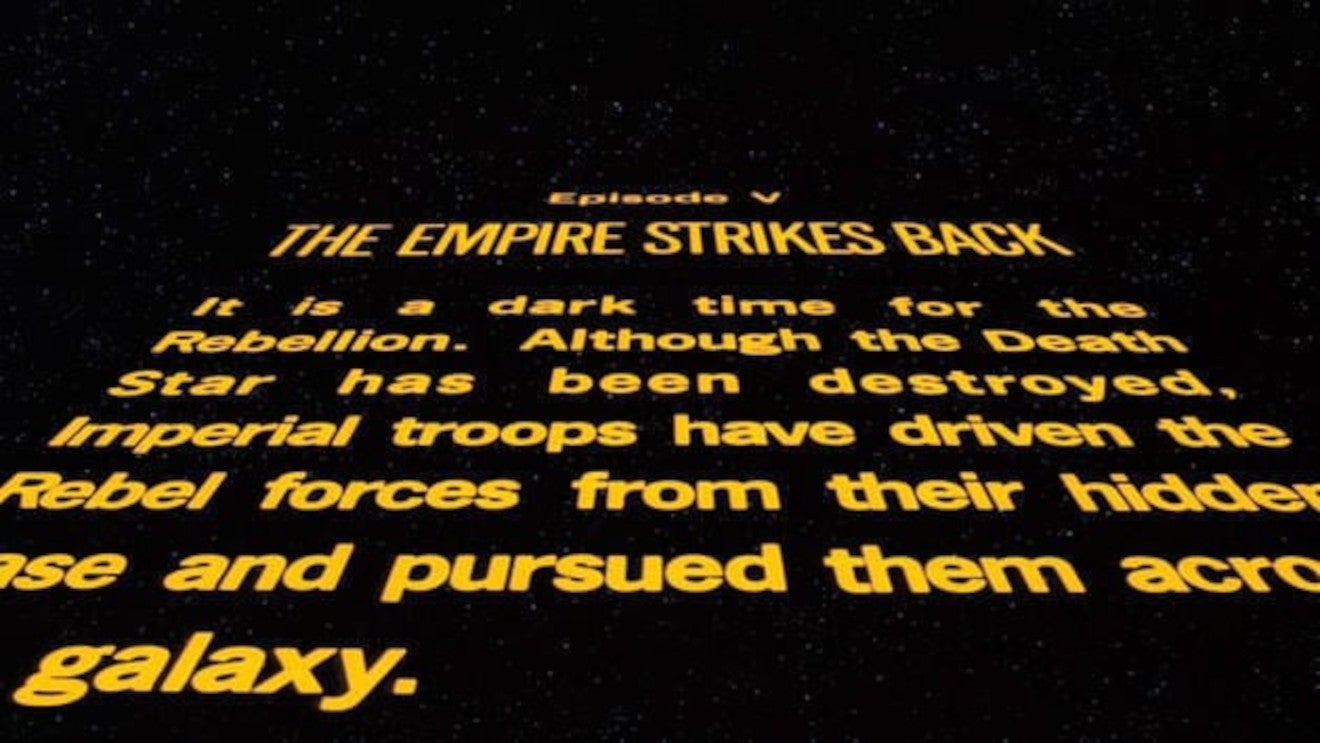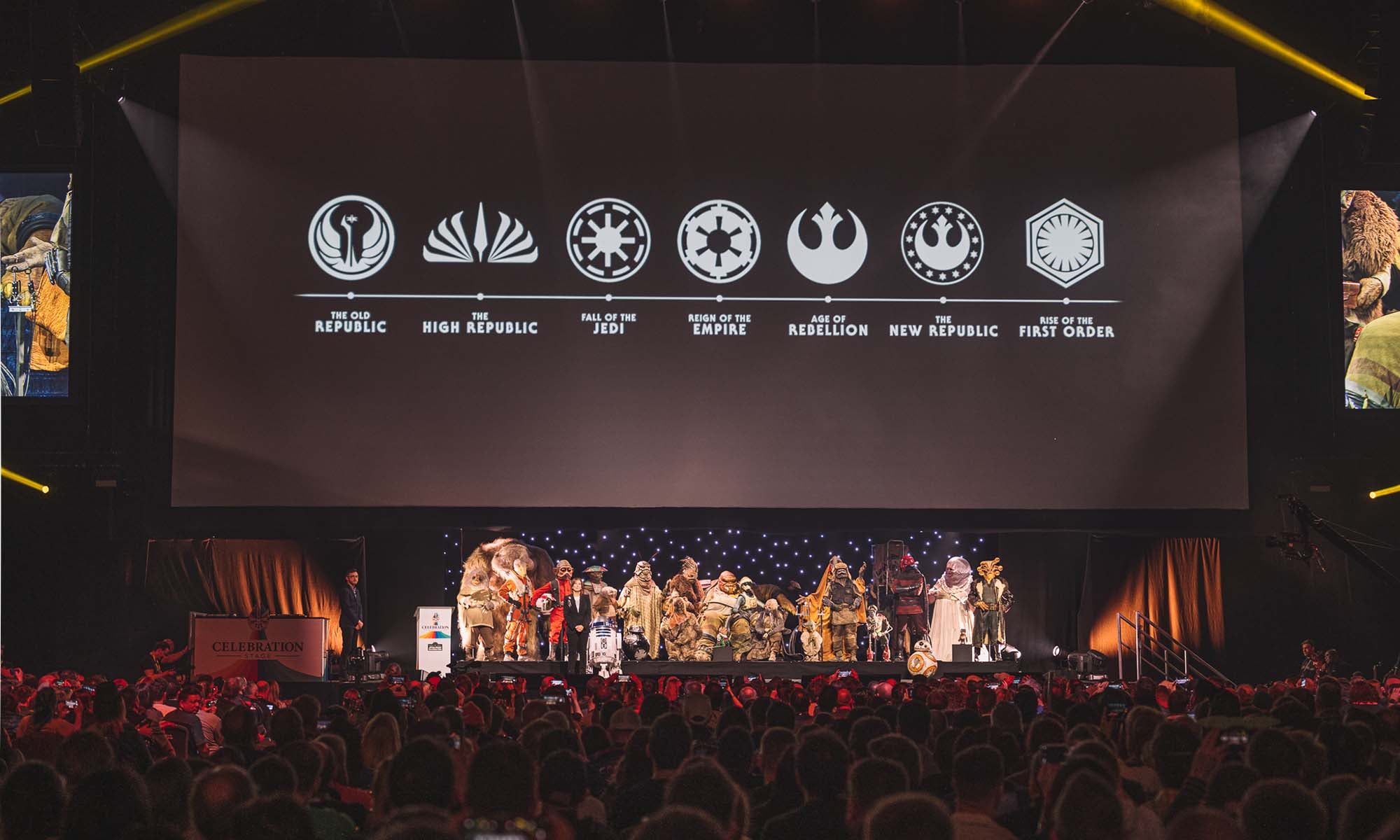If you click on a link and make a purchase we may receive a small commission. Read our editorial policy.
The Star Wars timeline: Why does Lucasfilm have to make it so confusing?
Even Grogu longs for a day of television timeline clarity

Another Star Wars Celebration recently ended and boy is it a great time to be a Star Wars fan. You can find stories related to the universe in a variety of mediums. Films? Comics? Novels? Television? They are all so easily accessible these days with even new tales consistently being developed.
No place fans have noticed more than on the small screen. With the introduction of the streaming platform, Disney+, and its need for exclusive content, we have benefitted from a reliable release of TV series for the past few years. Sometimes, they even run concurrently. That's a much quicker pace compared to the films when you think we had to wait over ten years between each of the three sets of trilogies.
With all these new options, diehards can easily transition from one show to the next. But how about the casual fan understanding the Star Wars timeline? Or the newb who's heard all the hype and is ready to take the plunge into a long time ago in a galaxy far, far away? Much like Disney's other mega screen franchise the Marvel Cinematic Universe, it can be intimidating to sift through all of Star Wars, particularly on the television side.
Star Wars doesn't make it any easier by having their series jump from one era to the next without any obvious notations for fans to figure out where it fits. We have a mixture of origin stories, continuations, and brand-new tales. As such, there isn't always a robust connectivity between the various narrative threads making it difficult to see the bigger picture. The Star Wars TV programs could help its viewers by dispelling much of the confusion and by clearly articulating what periods the different shows occur. By doing so, it would make itself much more approachable and attract many new fresh eyes.
Star Wars has a history of chronological jumping

Even with the first two films, Star Wars has made things confusing for its fans. The Empire Strikes Back would be the first movie to include the episode number in the opening crawl. Audiences were perplexed to see 'Episode V.' Aren't there just two movies? Did we miss something? What is going on in George Lucas's mind?
Regardless, viewers went along with it and when Star Wars was rereleased in 1981, the opening crawl was altered to include 'Episode IV: A New Hope.' Short term, everyone had to take a step back due to the numbering but in the big picture, it all makes sense providing the space to create an additional two trilogies; one a prequel and another a sequel. It just took a good 42 years to reach that finish line, testing the patience of enthusiasts.
Similarly, the Star Wars: The Clone Wars animated series played similar time tricks. As an anthology, the show focused on mini story arcs throughout its seven seasons rather than a single cohesive narrative. It was nice to jump around the galaxy to see how different areas were affected by the war. However, each story did not occur sequentially so imagine the surprise when a long dead individual reappears, not in a soap opera kind of way, or characters are making plans for something that has already occurred in earlier seasons.
With Star Wars having a confusing timeline embedded within its DNA, it's no surprise that the trend continues today. Still, it could do better by us.
The tangled web of the current Disney+ Star Wars series

The live-action era of Star Wars television began so easy. Disney+'s The Mandalorian involved brand new characters, such as the titular Din Djarin, and took place in between The Return of the Jedi and The Force Awakens. Then the second season eased into the greater universe as we saw old friends including Ahsoka, Boba Fett, and Luke Skywalker as a young Jedi knight. The next series was a direct spin-off with The Book of Boba Fett. It shed light on what happened to the galaxy's most notorious bounty hunter and also served as a de facto The Mandalorian season 2.5 as it involved more of Djarin and his surrogate son, Grogu. Two shows, same timeline. So far so good.
The third series jumps back in time to ten years after Revenge of the Sith. Obi-Wan Kenobi sees the Jedi Master from both the prequels and original trilogy set off on an adventure to save a kidnapped princess. At least the casting of Ewan McGregor tells you what stage of Kenobi's life we're in (I would say we would never get a Sir Alec Guinness Kenobi again, but with AI generating James Earl Jones's voice for Darth Vader and CGI recreating a young Luke or even the deceased Peter Cushing as Grand Moff Tarkin in Rogue One: A Star Wars Story, you can't say never).
Speaking of Rogue One, It's prequel Andor would see another skip sitting three years after Obi-Wan Kenobi and up to 14 years before The Mandalorian. That doesn't even factor in the animated shows with The Clone Wars and The Bad Batch, which take place 9-13 years before Obi-Wan Kenobi, and Tales of the Jedi following two separate timelines that span approximately 70 years between its two characters. You can begin to see with more Star Wars TV on Disney+, the more convoluted things can get since each series occupies its own era.
Star Wars attempts at clarifying the timeline

Lucasfilm hears you and they are trying to make your viewing easier. The simplest way is through Disney+ where there is an option to watch all of the canon Star Wars content in chronological order. It's a good starting point, but it is still such a large task to watch it all through. Also, there is no indication where each film and movie sit on the timeline so you don't really know how far apart one entry is to the next.
In Andor, we see the first on-screen use of the terms BBY and ABY. They stand for 'Before the Battle of Yavin' and 'After the Battle of Yavin' respectively. The Battle of Yavin is the clash between the Empire and the Rebel Alliance over the moon of Yavin IV where Luke Skywalker destroys the first Death Star in A New Hope. The nomenclature was predominantly used in marketing materials, reference books, and by fans and gives a better idea of when events occurred using a single reference point; the one that started it all.
More recently at Star Wars Celebration, a new timeline was revealed divided into nine distinct eras: Dawn of the Jedi, the Old Republic, the High Republic, Fall of the Jedi, Reign of the Empire, Age of Rebellion, the New Republic, Rise of the First Order, and New Jedi Order. This new structuring moves the franchise away from the 'Skywalker Saga' of nine films into a bigger universe. It also provides a quick reference for fans to explore their favorite periods. There are even three all-new ages never before visited on-screen including the High Republic where the upcoming The Acolyte is set in.
It's been a gradual process for Disney and Lucasfilm to clearly convey where each television series takes place in Star Wars history. It's more for the benefit for viewers who might not have their finger on the pulse with regards to everything in the franchise. Hopefully their latest attempt can clear up much of the confusion and make Star Wars more approachable and enjoyable.
Confused? Here's our guide to watching Star Wars - whether you want to go chronologically, by release, or just the essentials.
Follow Popverse for upcoming event coverage and news
Find out how we conduct our review by reading our review policy
Let Popverse be your tour guide through the wilderness of pop culture
Sign in and let us help you find your new favorite thing.
















Comments
Want to join the discussion? Please activate your account first.
Visit Reedpop ID if you need to resend the confirmation email.